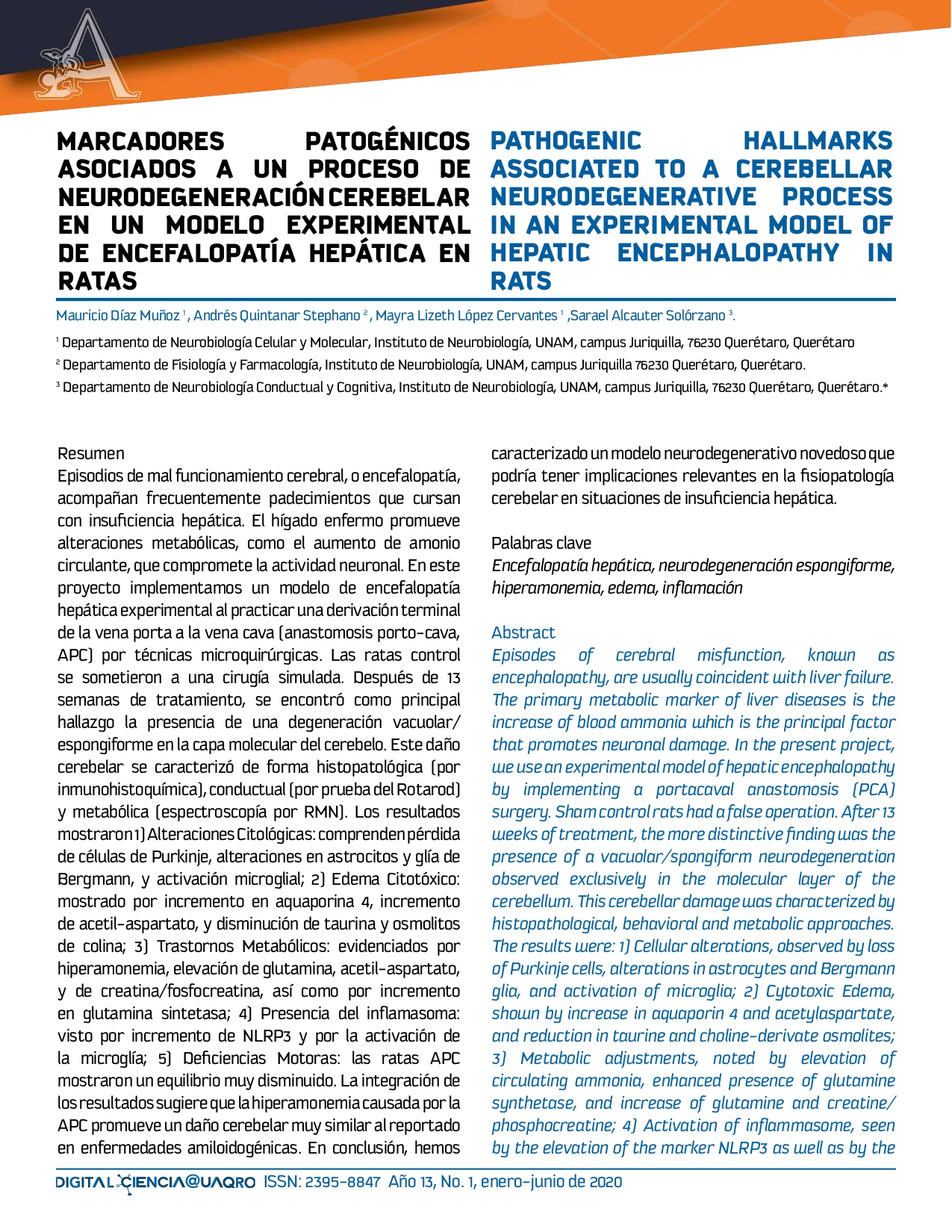Abstract
Episodes of cerebral misfunction, known as encephalopathy, are usually coincident with liver failure. The primary metabolic marker of liver diseases is the increase of blood ammonia which is the principal factor that promotes neuronal damage. In the present project, we use an experimental model of hepatic encephalopathy by implementing a portacaval anastomosis (PCA) surgery. Sham control rats had a false operation. After 13 weeks of treatment, the more distinctive finding was the presence of a vacuolar/spongiform neurodegeneration observed exclusively in the molecular layer of the cerebellum. This cerebellar damage was characterized by histopathological, behavioral and metabolic approaches. The results were: 1) Cellular alterations, observed by loss of Purkinje cells, alterations in astrocytes and Bergmann glia, and activation of microglia; 2) Cytotoxic Edema, shown by increase in aquaporin 4 and acetylaspartate, and reduction in taurine and choline-derivate osmolites; 3) Metabolic adjustments, noted by elevation of circulating ammonia, enhanced presence of glutamine synthetase, and increase of glutamine and creatine/phosphocreatine; 4) Activation of inflammasome, seen by the elevation of the marker NLRP3 as well as by the microglial activation; 5) Locomotor deficits, PCA rats showed a clear deficient performance in the Rotarod test. Integration of all these results lead us to the suggestion that metabolic disturbances associated to PCA can generate a particular cerebellar damage that is similar in several aspects to morphophysiological modifications observed in amyloidogenic disorders. In conclusion, we have characterized a novel neurodegenerative process that could be relevant in the cerebellar function in situations of liver failure
This work is licensed under a Creative Commons Attribution-NonCommercial 4.0 International License.

